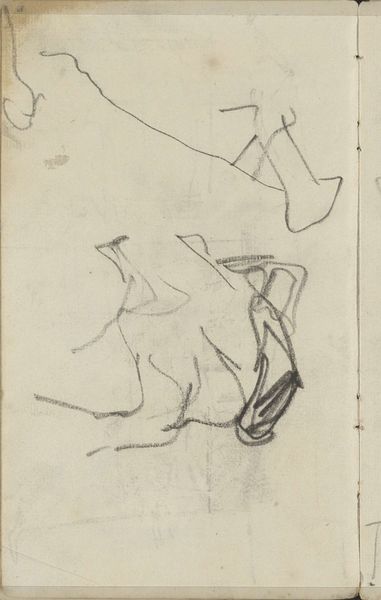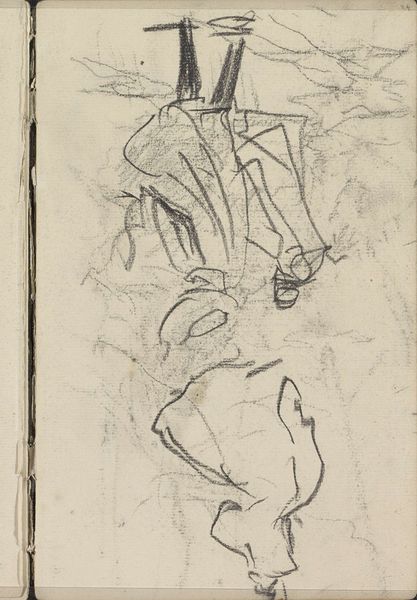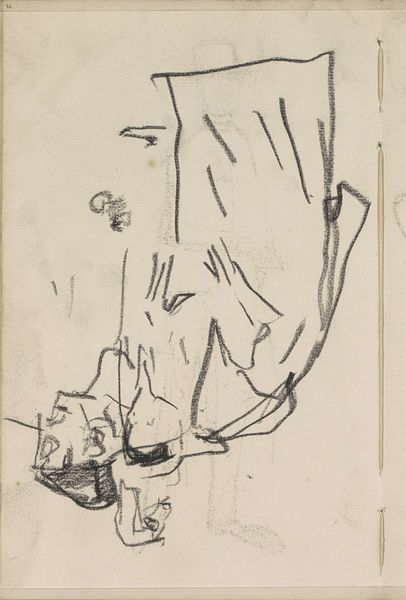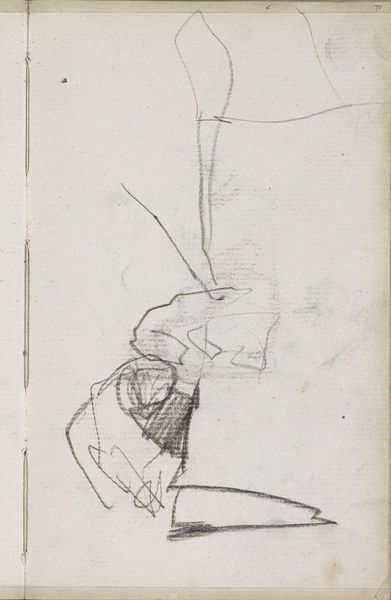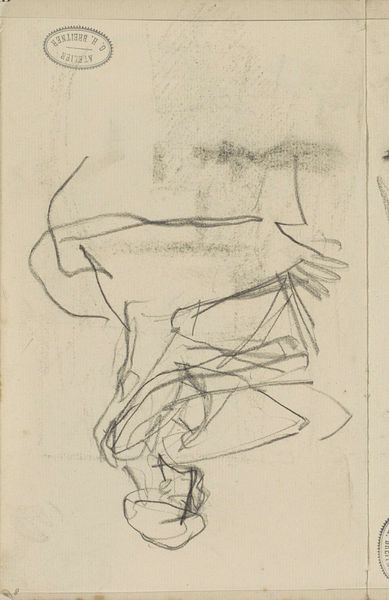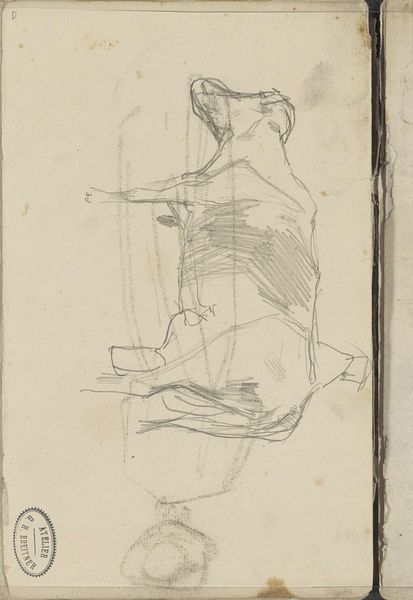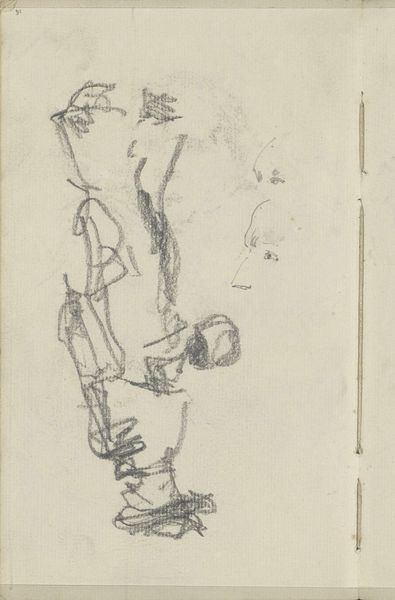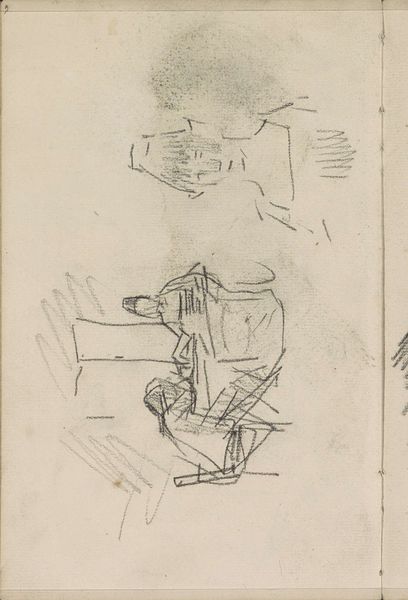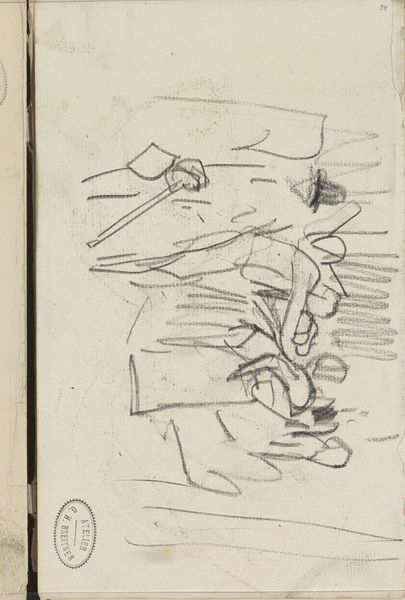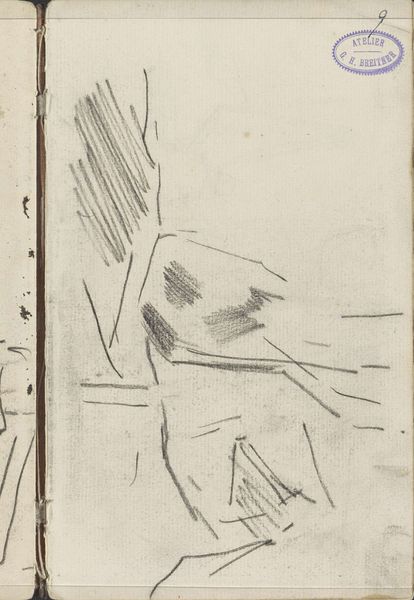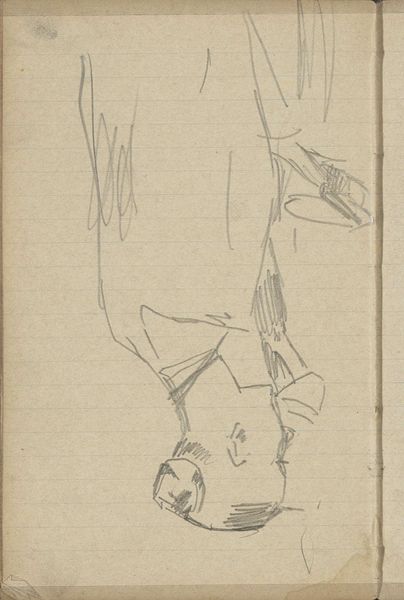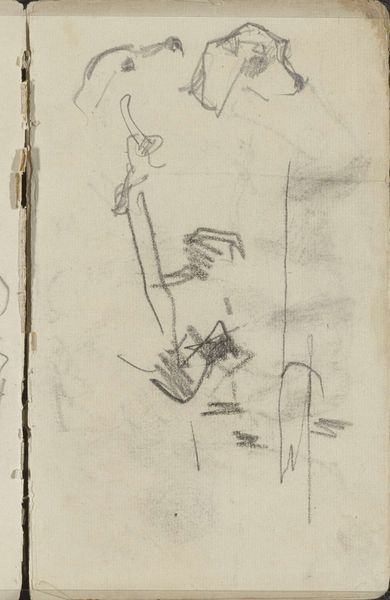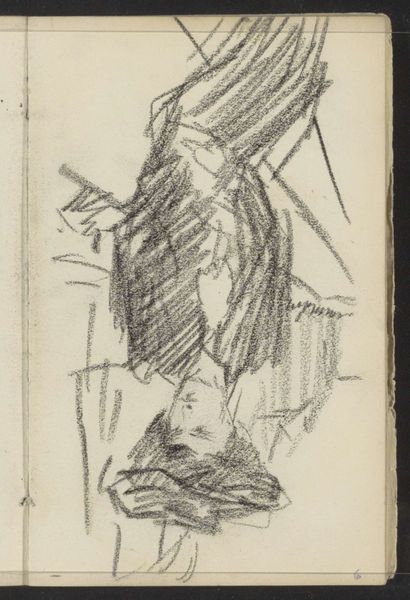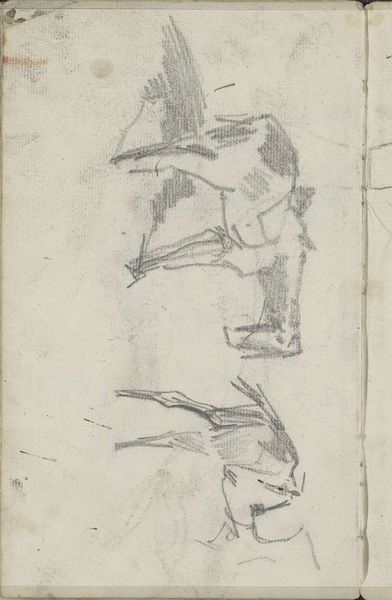
drawing, pencil, graphite
#
drawing
#
impressionism
#
landscape
#
figuration
#
pencil
#
horse
#
graphite
Copyright: Rijks Museum: Open Domain
Curator: This is a drawing titled "Two Figures Behind Two Horses" by George Hendrik Breitner, made with pencil and graphite between 1884 and 1886. It's currently held here at the Rijksmuseum. What strikes you initially? Editor: It has a striking, almost anxious energy. The lines are so immediate and raw, like the artist was trying to capture a fleeting moment, before it vanished. The figures are shrouded, the focus is very much on the animals. Curator: Absolutely. Considering Breitner’s focus during this period, especially his fascination with the working class and urban life in Amsterdam, these horses were very central to the economic function of the city. Consider how draft horses were crucial in transporting goods; their presence and condition reflect broader societal circumstances and labor practices of the time. Editor: Yes, and Breitner often explored how rapid urbanization impacted both human and animal lives. By drawing attention to these working animals, he also calls into question the conditions under which they live and labor, paralleling it to that of the lower working class. We should remember, horses were essential machinery for that time, they didn’t live cozy. This ties into issues of animal rights and exploitation that continue to be relevant. Curator: I agree, it opens that crucial discourse. Let’s look closely at the materials: pencil and graphite, simple yet effective for quickly capturing form and light. This economy of means points to a process focused on documenting the immediate sensory experience of modern life in Amsterdam, something he pursued quite a lot. We can examine those choices as tied to both availability and intention—he clearly was more drawn to modern photography than conventional oil painting techniques. Editor: True, this aesthetic captures the spirit of its era but it also reminds us how art can serve as a potent commentary on power, labor, and social conditions. And how quickly new technologies of representation changed everything. Curator: These sketches of daily scenes ultimately give insight to the dynamic, industrializing urban life of that moment. And Breitner's drawing certainly underscores a profound, ongoing conversation around working conditions and visibility. Editor: It truly does—thank you for bringing the deeper narrative to life for me, the context really enhanced the artwork for me today!
Comments
No comments
Be the first to comment and join the conversation on the ultimate creative platform.
